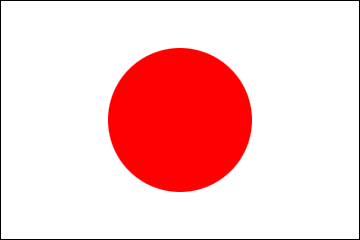JET Programme Series: Getting wrapped up in culture - Joanna Ming Hon
2021/1/26
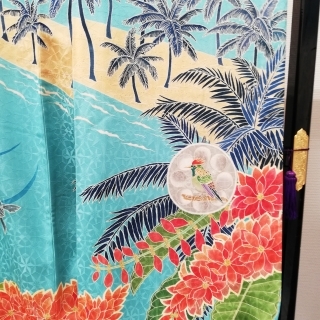
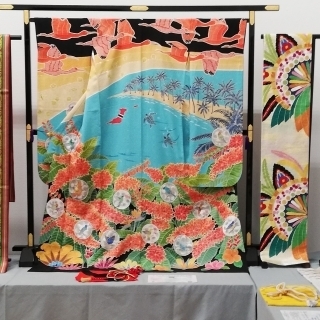
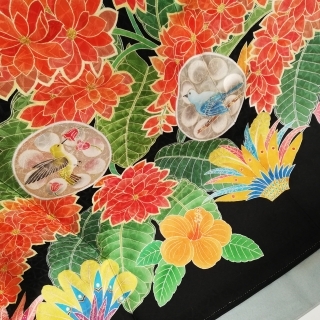
JET Programme Series: Getting wrapped up in culture - Joanna Ming Hon
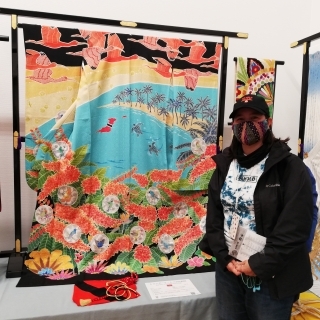
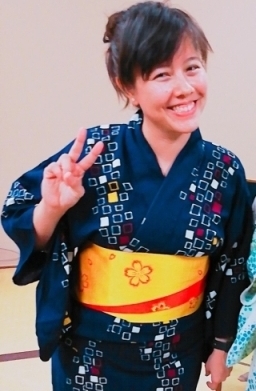
Kimono is one of the most well known traditional garments of Japan. The name recently regained some popularity as it was used by a famous American celebrity as branding for their new clothing line but was compelled to consider an alternative after a politely written letter from the governor of Kyoto prefecture. However the word kimono is not as dramatic as it is a simple garment that many wear for a special occasion(s).The word for Kimono in Japanese 着物 is made of two words; “to wear” (着る) and “thing” (物).
Last year I had the pleasure to learn more about the textile production in the Tango region of Kyoto Prefecture. The region where I have called my home for the past 3 years. Growing accustomed to the sounds of weaving machines and sights of silk threads drying in the sun. The tango region produces 60% of the textiles used to make kimonos in Japan. This area specializes in a crepe style of weaving called chirimen. Many of the textile producers only work with silk. I learnt that the outer garment is made from one bolt of cloth which is 13 meters in length and 38 cm in width. Additionally one silk thread is about half the thickness of a strand of human hair. Each thread is composed of 10 strands of silk spun together and one bolt of silk requires 3,000 silk cocoons. Many textile companies have been family owned and operated for 300 years, some are even my students.
Many times I am in awe as to how my JET placement matches with my interest, having studied Fashion Design in UTT. I was eager to learn more about textiles in Japan. I am grateful to have been taught how to wear the summer version of kimono called “yukata”, as well as be part of a few kimono festivals. My greatest experience with kimono is seeing the Olympic Kimono that was designed for Trinidad and Tobago. I previously saw the kimono via the official website but it could not compare to seeing it in person. During a time when there was no hope of returning home and feeling overwhelmed with the pandemic. The Trinidad and Tobago kimono made me feel like I was visiting home, just for a moment in my memories. The designers were able to capture all the best parts of Trinidad and Tobago from the birds, the trees, flowers, beaches, turtles, the sea and the beautiful hidden steel pan. Not only the kimono but the heavily brocade woven obi belt reminded me of beautiful costumes for the King and Queens parade seen during carnival celebration.
Joanna Ming Hon
JET (Japanese Exchange & Teaching) Program Assistant Langauge Teacher
Kyoto Prefecture, JAPAN
JET Programme Series: Getting wrapped up in culture (Japanese Embassy Facebook)
JET Programme Series Archives
Last year I had the pleasure to learn more about the textile production in the Tango region of Kyoto Prefecture. The region where I have called my home for the past 3 years. Growing accustomed to the sounds of weaving machines and sights of silk threads drying in the sun. The tango region produces 60% of the textiles used to make kimonos in Japan. This area specializes in a crepe style of weaving called chirimen. Many of the textile producers only work with silk. I learnt that the outer garment is made from one bolt of cloth which is 13 meters in length and 38 cm in width. Additionally one silk thread is about half the thickness of a strand of human hair. Each thread is composed of 10 strands of silk spun together and one bolt of silk requires 3,000 silk cocoons. Many textile companies have been family owned and operated for 300 years, some are even my students.
Many times I am in awe as to how my JET placement matches with my interest, having studied Fashion Design in UTT. I was eager to learn more about textiles in Japan. I am grateful to have been taught how to wear the summer version of kimono called “yukata”, as well as be part of a few kimono festivals. My greatest experience with kimono is seeing the Olympic Kimono that was designed for Trinidad and Tobago. I previously saw the kimono via the official website but it could not compare to seeing it in person. During a time when there was no hope of returning home and feeling overwhelmed with the pandemic. The Trinidad and Tobago kimono made me feel like I was visiting home, just for a moment in my memories. The designers were able to capture all the best parts of Trinidad and Tobago from the birds, the trees, flowers, beaches, turtles, the sea and the beautiful hidden steel pan. Not only the kimono but the heavily brocade woven obi belt reminded me of beautiful costumes for the King and Queens parade seen during carnival celebration.
Joanna Ming Hon
JET (Japanese Exchange & Teaching) Program Assistant Langauge Teacher
Kyoto Prefecture, JAPAN
JET Programme Series: Getting wrapped up in culture (Japanese Embassy Facebook)
JET Programme Series Archives
